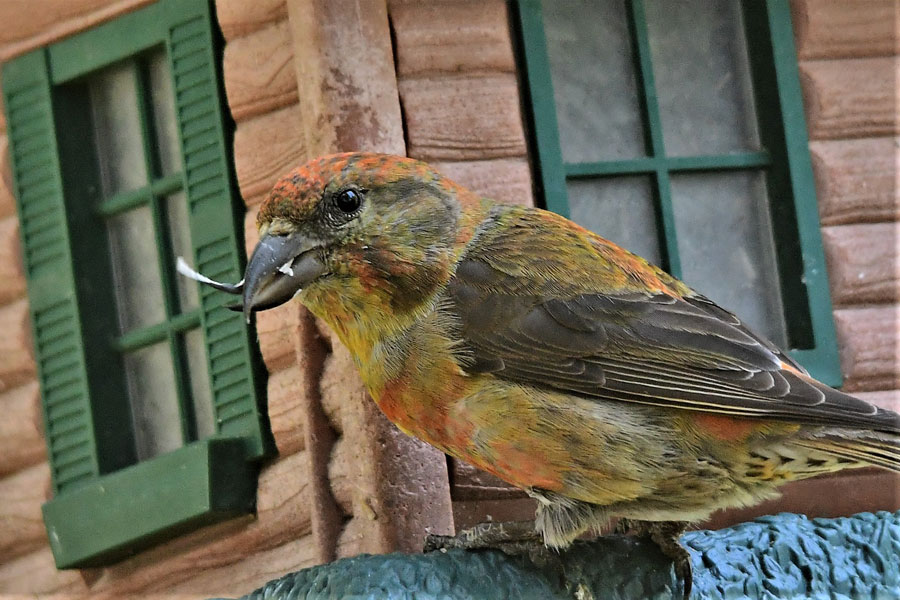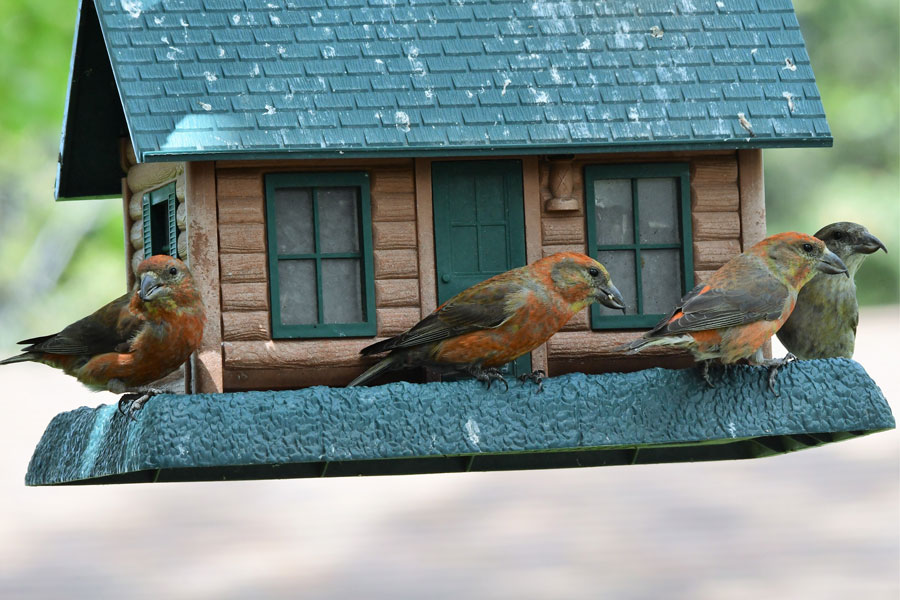Birds rarely seen in eastern Idaho visit my front yard for the first time in 3 years
Published at | Updated at
After three years of being absent, a flock of about 14 Red crossbills showed up in the four large, cone-laden mixed evergreens in my front yard, with their soft “clip-clip-chip” calls. It did not take them long to discover the sunflower seed feeders in the backyard for an easier meal than breaking open the fir, spruce and pine cones.
Of course, they had competition with the larger Black-headed grosbeaks and the more aggressive Red-winged blackbirds over the main feeder. But often they would gently call to each other through the tall poplars and evergreens as they waited their turn, but most often they would head inside the evergreens to wrestle with a cone for their meal.
The fir tree appeared to be their favorite as they would remove a cone, hold it with one foot while inserting their specialized bill between two scales of the cone to pry it open enough to harvest a seed. But as soon as the more aggressive birds left my feeder, the small flock would fly to it for an easier meal. They are very adapted to removing the meat of the seed from its black outer hull.
These nomadic birds of the finch family are probably members of the “type #5” Lodgepole Pine crossbills that are found mostly in the Rocky Mountain states. But due to the major drought plaguing the Western states, many of them are migrating east where their natural foods are more abundant. This will also cause them to delay their nesting later in the summer or even into the fall when food becomes more plentiful.
Since I have both Engelmann spruce and Douglas fir trees — two of their favorite native foods along with large black-oil sunflower foods — hopefully this small group may stay around. By approaching slowly and talking softly to them as they are feeding, they have allowed me to get within six feet of them to witness their feeding habits.

Crossbills have a bill that crosses when they are closed and are designed to open very hard evergreen cones by separating the scales of the cones. Each “type” of the 11 types of crossbills is classified by their bill size, body size and the flight songs along with their behavior habits.
In 2017, the “Type #5” Cassia crossbill, found in Twin Falls and Cassia Counties, became a different species because of their uniqueness. Studies led by Dr. Craig Benkman from the University of Wyoming, found that the crossbills inhabiting in those two counties did not migrate and lived almost entirely on lodgepole pine seeds. Their bills were larger and stronger, allowing them to harvest seeds from the hard cones year-round. Unlike other crossbills that would nest in late summer, they would nest in the spring.
The City of Rocks National Reserve, located in the Albion Mountains in Cassia County, is a favorite recreation site for our family. Watching and studying the birds there have been a favorite activity and on our next trip there, I will be photographing and recording the sounds of the crossbills found there. By doing that, I can add those to my “eBird” account that Cornell University studies as “we know a lot about crossbills, but do not know enough.”
If you have crossbills in your yard or come upon flocks in the wild, record their sounds and photograph them so they can be identified what type they are.
Living the Wild Life is brought to you by The Healing Sanctuary.


